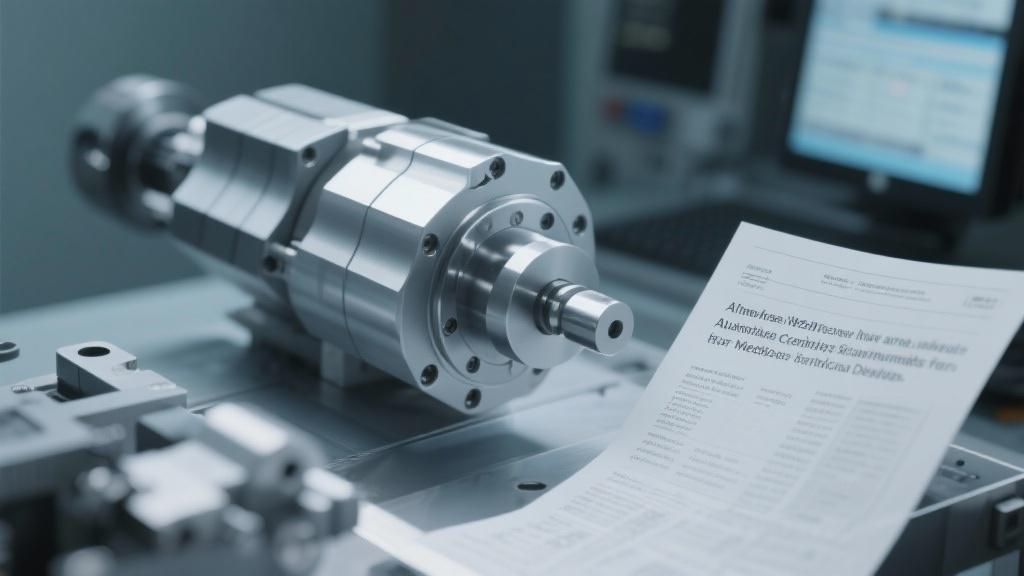We explore the unique requirements related to machining aluminum, including tolerances, surface finishes, and other key factors that directly impact the efficacy of medical devices. From CNC machining techniques to the importance of traceability and documentation, we shed light on best practices that align with industry standards.
Furthermore, this article emphasizes the significance of adopting innovative machining strategies that not only enhance precision but also optimize production efficiency. With insights into the latest trends and technologies, we provide valuable guidance for manufacturers looking to navigate the complexities of aluminum machining in the medical sector. Whether you are a seasoned industry professional or a newcomer eager to understand the fundamentals, this comprehensive overview equips you with the knowledge needed to meet the unique challenges of the medical device industry. Join us as we uncover the essential standards that ensure the success and safety of aluminum components in healthcare applications.
In the realm of medical devices, understanding the specific aluminum machining standards is crucial. This isn’t just a matter of precision; it’s about safety, reliability, and compliance with regulatory requirements. So, let’s get into the key aspects that define these standards, and how they affect the manufacturing processes.
What Are the Key Aluminum Machining Standards for Medical Devices?
Question: Why are aluminum machining standards so important in the medical device sector? Answer: Aluminum is widely used in medical devices due to its lightweight, strength, and corrosion resistance. However, machining aluminum for medical use requires rigorous standards to ensure that the final products meet patient safety requirements and regulatory criteria. This includes strict tolerances, surface finishes, and material properties that guard against contamination and ensure product performance. Question: What specific machining techniques are preferred for aluminum in medical applications? Answer: Common machining techniques include CNC machining, which allows for highly precise cuts and can create complex geometries required in medical devices. Techniques like milling, turning, and drilling are often used, and these processes must adhere to protocols that minimize the risk of scratches or surface blemishes—factors that can lead to product failure.
How Do Compliance and Quality Control Work?
Question: How do manufacturers ensure compliance with these standards? Answer: Manufacturers of medical devices often rely on certifications such as ISO 13485, which specifically addresses quality management systems for medical devices. Regular audits, strict documentation, and traceability throughout the manufacturing process ensure that every component meets established standards. This includes everything from raw material sourcing to final inspections. Question: What role does quality control play in aluminum machining for medical devices? Answer: Quality control is critical in maintaining the integrity and reliability of medical devices. This often involves a multi-step inspection process, where components are checked for dimensional accuracy, surface quality, and material composition. Adequate testing—such as non-destructive testing techniques—ensures that the final aluminum parts are free from defects that could compromise patient safety.
Unique Challenges in Machining Aluminum for Medical Devices
Question: What unique challenges do manufacturers face in this area? Answer: One of the biggest challenges is balancing precision with production efficiency. Since medical devices often have strict design specifications, a small error can lead to significant compliance issues. Additionally, the high standards for biocompatibility and sterilization add layers of complexity to the machining process. Factors such as material selection and machining methods must be optimized to meet both mechanical and regulatory requirements.
Question: How is technological innovation shaping aluminum machining standards in the medical sector? Answer: Innovations in machining technologies, like advanced CNC machinery and automation, are enhancing the capability to produce complex parts with high precision and efficiency. Furthermore, the implementation of real-time monitoring and data analytics allows for immediate corrections during the machining process, enhancing quality and reducing waste.
In summary, the aluminum machining standards for medical devices encompass a wide range of considerations—precision, compliance, quality control, and innovative manufacturing techniques all play a pivotal role. Understanding these standards is essential for anyone involved in the design and production of medical devices. By staying committed to quality and safety, manufacturers can navigate the complex landscape of the medical device industry successfully.
What are the main machining techniques used for aluminum in medical devices?
Machining techniques like CNC machining, milling, and drilling are commonly used for aluminum in medical applications. These methods allow for high precision and can achieve the complex shapes required in various medical devices.
CNC machining, in particular, is favored because it minimizes errors and can be programmed for repeatable accuracy. This is crucial in the medical field, where even small discrepancies can lead to significant safety concerns.
What is the role of quality control in aluminum machining for medical devices?
Quality control ensures that the aluminum parts produced meet stringent regulatory requirements. Manufacturers employ rigorous inspection processes to verify dimensional accuracy and surface finishes before the parts are used in medical devices.

This often includes practices like non-destructive testing and regular audits to maintain high standards throughout the manufacturing process. Such measures help prevent any defects that could compromise patient health.
What challenges do manufacturers face when machining aluminum for medical purposes?
Manufacturers encounter several challenges, including balancing precision with production efficiency. High design specifications mean that even minor machining errors can result in significant compliance issues.
Additionally, ensuring biocompatibility and sterility of aluminum parts poses unique challenges. As a result, manufacturers must optimize both materials and machining techniques to satisfy both mechanical properties and regulatory standards.
How do manufacturers ensure compliance with aluminum machining standards?
Manufacturers adhere to standards like ISO 13485, which is focused on quality management in the medical device industry. This often involves keeping detailed documentation and traceability of all manufacturing steps.
Regular audits and inspections help ensure that every component complies with established standards, from raw material sourcing all the way to the final product.
What innovative strategies are being adopted in aluminum machining for medical devices?
Innovative approaches such as adopting advanced CNC machinery and automation are enhancing aluminum machining. These technologies improve precision and minimize waste during production.
Additionally, real-time monitoring systems allow immediate adjustments during machining, which significantly impacts the quality of the final products. This type of innovation is crucial in meeting the necessary medical device standards.









